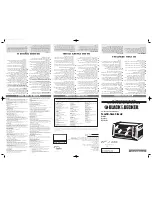
Fulton Boiler FBS Series
FBS 01/05 28
FITTING NEW GASKET
General
CAUTION
TOPOG-E gasket have a finite life after installation and must be renewed annually. It is
important that the instructions given in this section are adhere to.
The boilers are fitted with TOPOG-E gaskets in all the inspection holes of the boiler. These gaskets
work very well and millions have been safely used over the last 30 years, however, it is absolutely
essential to observe a few simple rules in order to get the best performance from your installation.
Elastomeric Vulcanizates, which form the basis of TOPOG-E gaskets, undergo degredation from
many sources including heat, oxygen, stress, and overdosing from certain types of water treatment.
This takes the form of material oxidation, hardening/embrittlement and cracking which may result in
gasket failure. Steps must be taken to minimize the effects of such attacks.
Water treatment and oxygen attack can be combated by ensuring that the gasket is aligned correctly
so that only the extreme edges of the gasket are exposed. If a new gaskets leaks after fitting this is
almost certainly due to incorrect seating or alignment. As such gaskets are very reduce the life of
the gasket and cause problems later.
Under stress can be avoided by tightening just sufficiently to stop any leakage when fitting cold and
before firing the boiler. Fire the boiler and then gradually warm the boiler up, allowing the increasing
steam pressure to take over and complete the seal. The will allow the gasket material to contract
naturally and follow the topography of the mating surfaces. The securing nut can then broken when
the boiler is cold and under negative pressure.
Gentle warming of the boiler on initial firing after maintenance will also help to ensure that the rubber
‘cures to shape’. If the rubber post-cures, the elastic memory will be destroyed and any initial
over-tightening will cause the gasket to become hardened and embrittled, leading to cracks and
eventual failure.
Fitting Instructions
Blowdown the boiler completely and examine all inspection holes in the boiler. If any leakage is
evident, proceed as follow:
(a) Disassembly the crabs and cover plate and remove the inspection hole assembly. Remove the
old gasket and thoroughly clean the mating faces of the cover plate and boiler ring.
(b) Pace the new Topog-E gasket on the cover plate, ensure the gasket is the correct size and is
seating flat against the plate. Do not use any grease, lubricant or adhesive. If the new gasket is
not seated properly before the plate is tightened, the gasket may be pinched causing a failure
when the pressure builds up.
(c) Position the cover plate in the boiler ring, ensuring that the plate is correctly centred. An off-centre
cover plate can concentrate forces on the gasket and cut it in two. The cover plate may also drag
on the boiler hole ring and fail to seal as the pressure rises. Set the crabs further quarter of the
turn using a spanner. DO NOT OVERTIGHTERN.
NOTE
Ensure the gasket is aligned correctly so that only the extreme edges are exposed to water
treatment or oxygen attack. If the gasket is misaligned, over tightening to seal a leak will not
prevent subsequent leakage at a later date.
(d) Gradually warm up the boiler, allowing steam pressure to make the seal. If the gasket leaks
during pressure build up, tighten the securing nuts sufficiently only to stop the leakage. It is
important to keep the nuts correctly tightened thereafter, this prevents the vacuum developed by
cooling on shutdown from feeding and draining the boiler.
NOTE
New gasket fitted to inspection holes located along the bottom of the boiler are more difficult
to install without leaking. Small particles of the scale or sand tend to run down on the mating
surfaces after cleaning but prior to assembling. This condition is likely to have occurred if
excess tightening is required to stop a leak before warming the boiler. In this event, the best
course of action is to drain the boiler and repeat the gasket fitting procedure. Failure to do so
will severely reduce the life of the gasket.
(e) Clean and inspect each water gauge sight glass. If any water leakage is evident, renew the sight
glass gasket.


































